Your iRacing looks like a game from 2010, or it runs like a slideshow. Maybe both. You’ve tweaked random settings for hours, but nothing seems to fix that yellow-tinted, stuttering mess that’s costing you positions on track.
iRacing’s graphics engine is heavily CPU-bound, renders multiple viewpoints simultaneously, and those default settings? They’re optimized for hardware from a decade ago.
Quick Setup: Choose Your Racing Rig
Jump straight to optimized settings for your setup
iRacing’s Unique Performance Profile
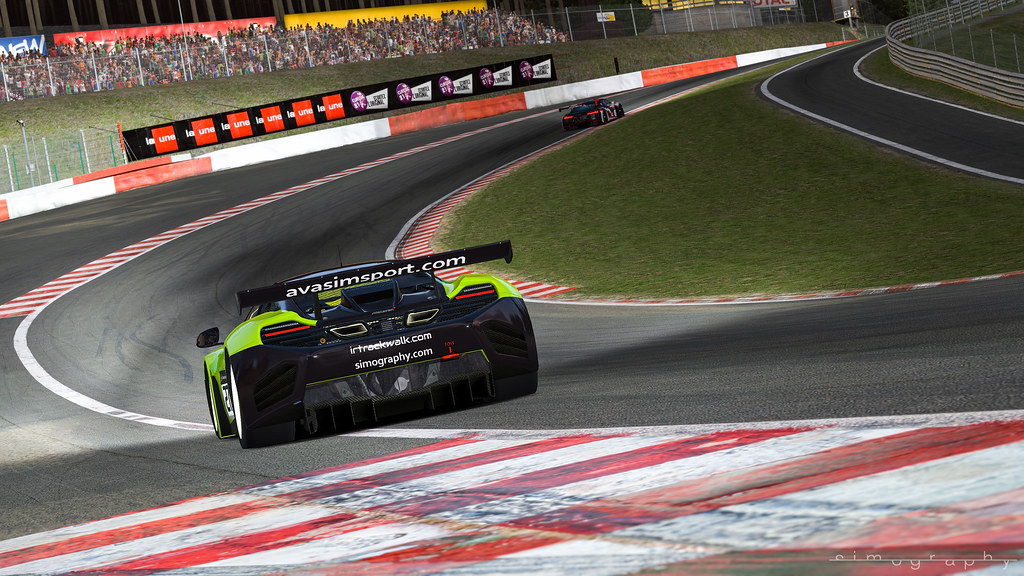
Before touching any settings, you need to know why iRacing behaves differently from every other racing sim. It’s built on an aging engine that’s heavily CPU-dependent, yet it can bring modern GPUs to their knees with the wrong settings.
The Critical Diagnostic: Press ‘F’ While Driving
CPU Bottleneck Detected
When the ‘R’ bar is higher than ‘G’, your CPU is limiting performance. This is the most common scenario in iRacing, especially at race starts with 40+ cars. Focus on reducing CPU-heavy settings like Crowds, Objects, and Dynamic shadows.
The Performance Impact of Every Setting
Not all settings are created equal. Some destroy performance for minimal visual gain, while others are practically free on modern hardware. This breakdown shows exactly what each setting costs and whether it’s worth enabling.
Settings Performance Impact Analysis
Single Monitor Optimal Settings
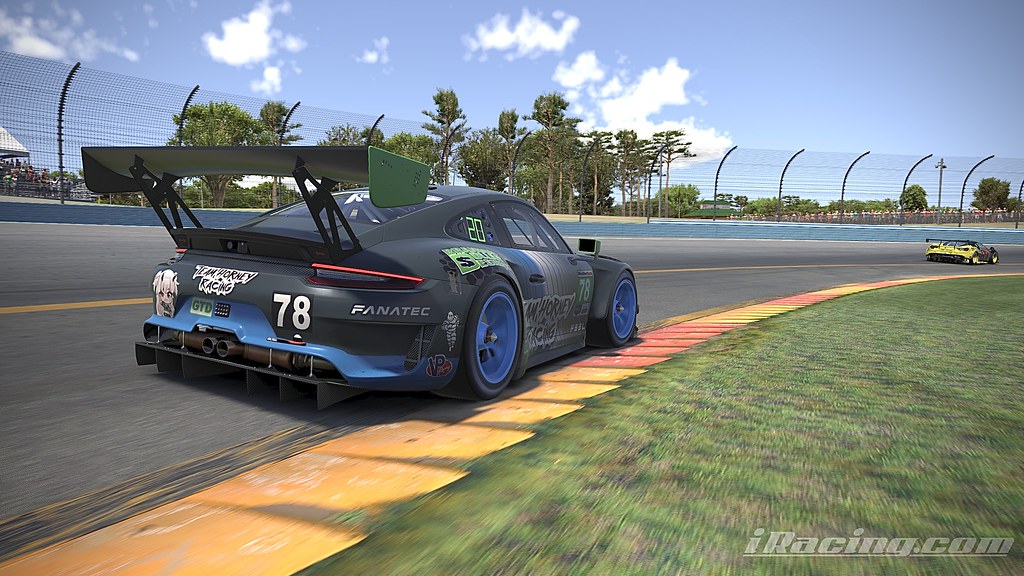
With just one screen to render, you have the most performance headroom. Modern GPUs from RTX 3070 upward can max out most settings at 1080p/1440p while maintaining high frame rates. Here’s the optimal configuration:
Single Monitor Performance Settings
| Setting Category | Balanced (RTX 3070/RX 6700 XT) | Maximum Quality (RTX 4070+) |
|---|---|---|
| Resolution | Native (1080p/1440p) | Native (up to 4K) |
| Anti-Aliasing | 4x MSAA | 8x MSAA |
| Anisotropic Filtering | 16x | 16x |
| Cars/Pit Objects | High/Medium | High/High |
| Crowds | Off | Low |
| Objects/Grandstands | Low | Medium |
| Shadow Maps | Track/Cars Only | All |
| Shader Quality | High | Ultra |
| Screen Space Reflections | Low (Rain Only) | High (Rain Only) |
| Cockpit Mirrors | 1 (Virtual Only) | 2-3 |
| HDR | Off | On |
| Target FPS | Match Monitor Hz | Match Monitor Hz |
Triple Monitor Configuration (The Modern Method)
Forget NVIDIA Surround or AMD Eyefinity – they add overhead and cause compatibility issues. The community-proven method involves directly editing iRacing’s configuration files for a borderless window spanning all displays.
This provides better performance and stability.
Edit rendererDX11Monitor.ini
Located in Documents\iRacing folder. Make these changes:
border=0
windowedWidth=7680 (for 3x 1440p monitors)
windowedHeight=1440
windowedXPos=-2560
In-Game Settings
- Enable “Render scene using 3 projections” – Essential for correct geometry
- Enable “SMP/MVP” (NVIDIA only) – Major performance boost
- Disable all physical cockpit mirrors – Use virtual mirror only
- Windows 11: Enable “Optimizations for windowed games” in graphics settings
Triple Monitor Optimized Settings
| Setting | Value | Why This Matters |
|---|---|---|
| Anti-Aliasing | 2x or 4x MSAA | 3x the pixels means 3x the AA cost |
| Shadow Maps | Off | Massive CPU hit with triple rendering |
| Crowds/Objects | All Off/Low | CPU can’t handle 3x the draw calls |
| Cockpit Mirrors | 0 (Virtual Only) | Each mirror = another full render pass |
| Post Processing | All Off | Triple the screen space effects |
| 3 Projections | On | Correct perspective on side monitors |
| SMP/MVP | On (NVIDIA) | 20-30% performance gain |
VR Settings are the Ultimate Performance Challenge
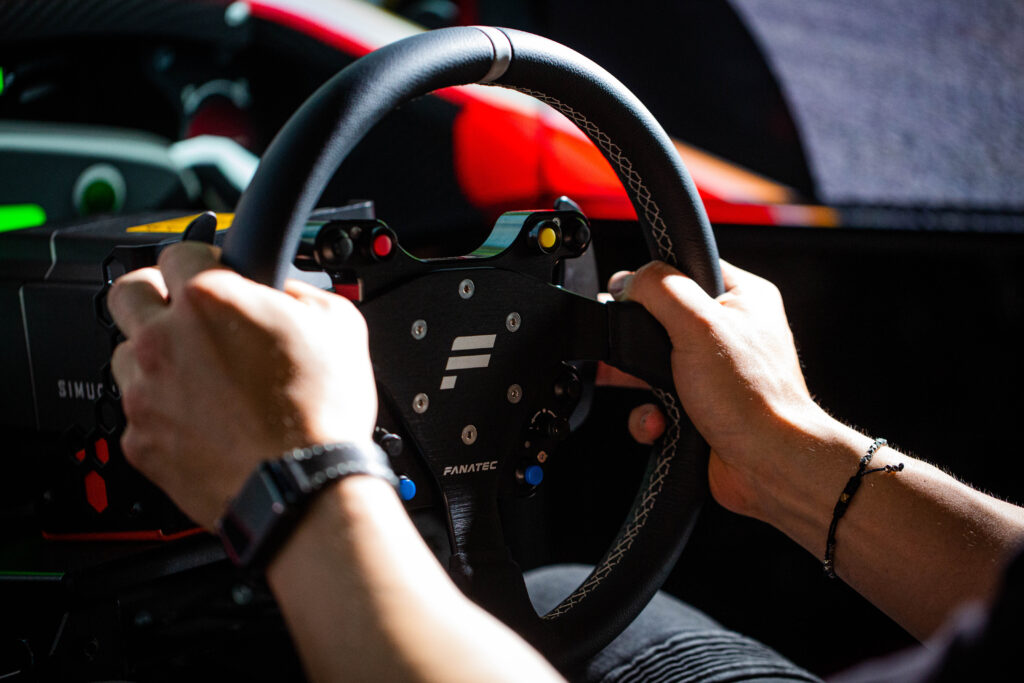
VR is iRacing’s most demanding display mode. You need rock-solid 90 FPS (45 with reprojection) to avoid motion sickness. Every setting must be carefully balanced, and some visual features simply aren’t viable.
VR Performance Settings
| Setting | Required Value | Impact if Higher |
|---|---|---|
| Display Mode | OpenXR | Best performance vs OpenVR |
| Cockpit Mirrors | 0 – Disabled | Instant 30+ FPS loss per mirror |
| Shadow Maps | Off | 20-40 FPS loss, causes stuttering |
| Dynamic Objects | Off | CPU spikes cause reprojection |
| Shader Quality | Medium | Major VR performance impact |
| Cubemaps | 0 | Multiple viewpoint renders |
| SPS (Single Pass Stereo) | On (NVIDIA) | 15-20% performance gain |
| Foveated Rendering | Via OpenXR Toolkit | 20-30% performance gain |
Fixing iRacing’s Yellow Tint (Color Correction)
Out of the box, iRacing has a distinctly warm, yellow color cast that makes it look dated. You don’t need to adjust your monitor – GPU driver filters can fix this in real-time with zero performance impact.
Before vs After Color Correction
- Launch an iRacing replay
- Press Alt+F3 to open GeForce Experience filters
- Add these filters in order:
Filter Stack:
- Color: Temperature -9, Vibrance +30
- Brightness/Contrast: Contrast +30
- Sharpen+: Intensity 15%, Texture Details 25%
These settings remove the yellow cast, enhance track detail visibility, and make the sim look years newer.
- Open AMD Radeon Software
- Gaming tab > Select iRacing
- Enable Custom Color
- Adjust Color Temperature slider toward blue
- Increase Saturation slightly for vibrance
Advanced INI File Tweaks
iRacing’s automatic memory detection often fails, leading to blurry textures and loading failures. Manual INI file edits can fix these issues and unlock additional performance.
Memory Allocation Fix
In rendererDX11Monitor.ini, manually set:
SysMemToUseMB=14000 (for 16GB RAM)
# Set to 80-90% of your actual hardware
Performance Boosts
MaxPitObjsToDrawInMirrors=0
# Disables other teams’ pit equipment
TwoPassTrees=0
# Reduces tree rendering quality for FPS
ParallelSorting=1
# Uses multiple CPU cores for sorting
Maximum Performance Profile
For competitive racing where every frame matters, or if your system struggles with iRacing, this profile prioritizes raw performance over visual fidelity. Perfect for league racing or endurance events where consistency beats eye candy.
Maximum Performance Settings
| Setting | Value | FPS Gain |
|---|---|---|
| All Crowds/Objects/Grandstands/Foliage | Off | +20-30 FPS |
| Shadow Maps | Off | +25-40 FPS |
| Shader Quality | Medium | +10-15 FPS |
| Anti-Aliasing | 2x MSAA | +15-20 FPS |
| All Post Processing | Off | +10-15 FPS |
| Particles | Low, Full Res | +5-10 FPS |
| Sky/Clouds | Low | +5-8 FPS |
| Total Performance Gain | +90-140 FPS | |
Common iRacing-related Issues
Cause: Automatic VRAM detection failure
Solution: Manually set VidMemToUseMB in INI file to 80% of your GPU’s VRAM
Example: 8GB GPU = Set to 7000MB
Cause: Insufficient system memory allocation
Solution: Set SysMemToUseMB in INI file
Example: 16GB RAM = Set to 14000MB
Cause: CPU bottleneck with many cars
Solutions:
- Disable Crowds completely
- Set Objects/Grandstands to Low
- Disable Dynamic Objects
- Reduce Cars LOD in graphics settings
- Consider upgrading to a CPU with better single-thread performance
The Bottom Line
iRacing’s graphics optimization is unlike any other sim. The aging engine creates unique challenges where CPU bottlenecks are common, certain settings have massive performance impacts, and automatic detection often fails. Success requires understanding your specific bottleneck and targeting the right settings.
Start by pressing ‘F’ in-game to identify whether you’re CPU or GPU limited. Then apply the appropriate profile for your display setup. Don’t forget to fix the yellow tint with GPU filters and manually set memory allocation if textures look blurry.
With these optimizations, you can achieve both the visual clarity needed for competitive racing and the consistent frame rates that keep you on the pace.
Frequently Asked Questions
Why does iRacing run poorly on my high-end GPU?
iRacing is heavily CPU-bound due to its aging engine that prioritizes physics accuracy over graphics efficiency. Even with an RTX 4090, you’ll struggle if your CPU has weak single-thread performance. Press ‘F’ while driving – if the ‘R’ bar is higher than ‘G’, your CPU is the bottleneck, not your GPU.
What are the most important settings to disable for FPS?
How do I set up triple monitors without NVIDIA Surround?
Edit rendererDX11Monitor.ini in your Documents\iRacing folder. Set fullscreen=0, border=0, windowedWidth=(total horizontal resolution), windowedHeight=(single monitor height), windowedXPos=-(single monitor width). Then enable “Render scene using 3 projections” in-game for correct geometry.
Why do car textures look blurry in iRacing?
iRacing’s automatic VRAM detection often allocates too little memory. Fix this by editing rendererDX11Monitor.ini and manually setting VidMemToUseMB to 80-90% of your GPU’s VRAM (e.g., 7500 for an 8GB card). This forces proper texture loading and eliminates blurriness.
How do I fix iRacing’s yellow tint?
Use GPU driver filters. For NVIDIA: Press Alt+F3 in a replay, add Color filter with Temperature -9 and Vibrance +30. For AMD: In Radeon Software, enable Custom Color for iRacing and increase the Color Temperature slider toward blue. This removes the dated yellow cast with zero performance impact.
What’s the best anti-aliasing setting for iRacing?
For single monitors: 8x MSAA if you have headroom, 4x MSAA for balanced performance. For triple screens: 2x or 4x MSAA maximum. For VR: 2x MSAA or use post-process AA like FXAA. Higher MSAA values have massive GPU impact – dropping from 8x to 4x can gain 15-25 FPS.
Should I use SMP/MVP with triple monitors?
Yes, absolutely. NVIDIA’s Simultaneous Multi-Projection (SMP/MVP) provides a 20-30% performance boost for triple monitor setups by rendering all three views more efficiently. Enable it along with “Render scene using 3 projections” for the best triple screen performance.
What are the best VR settings for 90 FPS?
Use OpenXR display mode, disable all Cockpit Mirrors, turn off Shadow Maps and Dynamic Objects, set Shader Quality to Medium, disable Cubemaps. Enable SPS (NVIDIA) for 15-20% gain. If you can’t maintain 90 FPS, enable reprojection and target a stable 45 FPS instead.
Why does FPS drop in the rain?
Screen Space Reflections (SSR) for wet track surfaces are extremely GPU-intensive. Even on Low, SSR has an “enormous” performance cost. Set it to “Rain Only” so it doesn’t affect dry sessions, and consider disabling it completely if you need maximum FPS in wet conditions.
How do I know if I’m CPU or GPU bottlenecked?
Press ‘F’ while driving to show the performance meter. If the ‘R’ (Renderer/CPU) bar is consistently higher than the ‘G’ (GPU) bar, you’re CPU-limited. If ‘G’ is higher, you’re GPU-limited. This can change dynamically – you might be CPU-bound at race start but GPU-bound when alone on track.
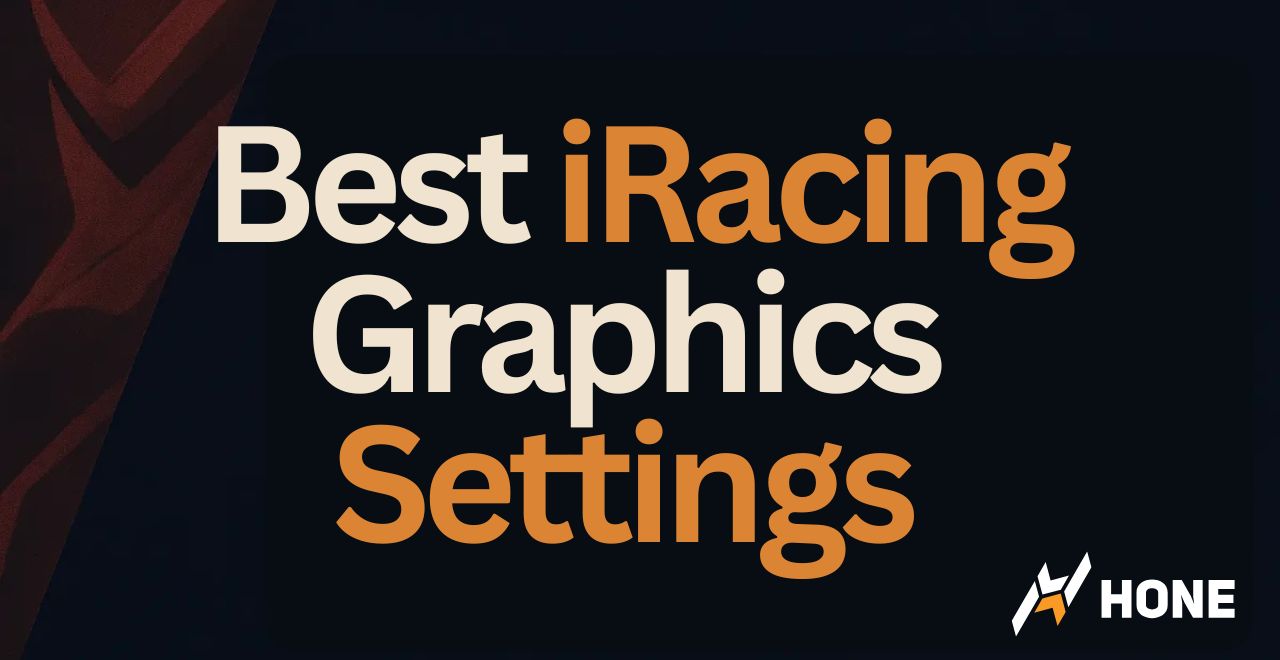

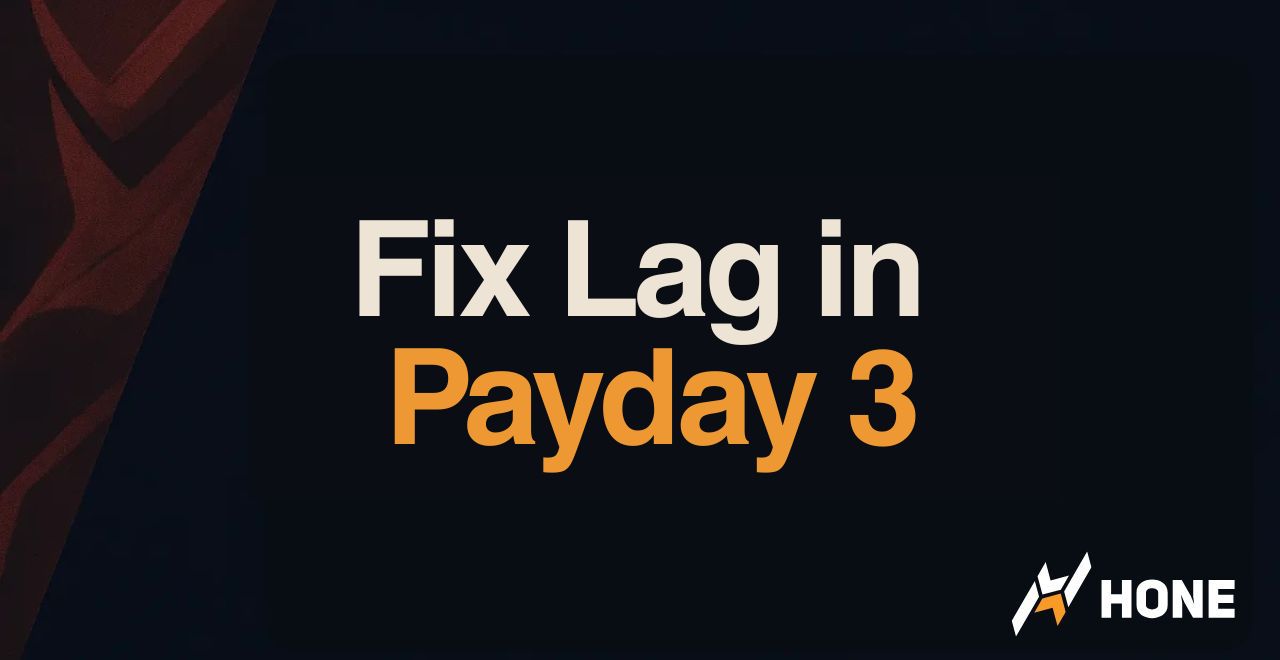

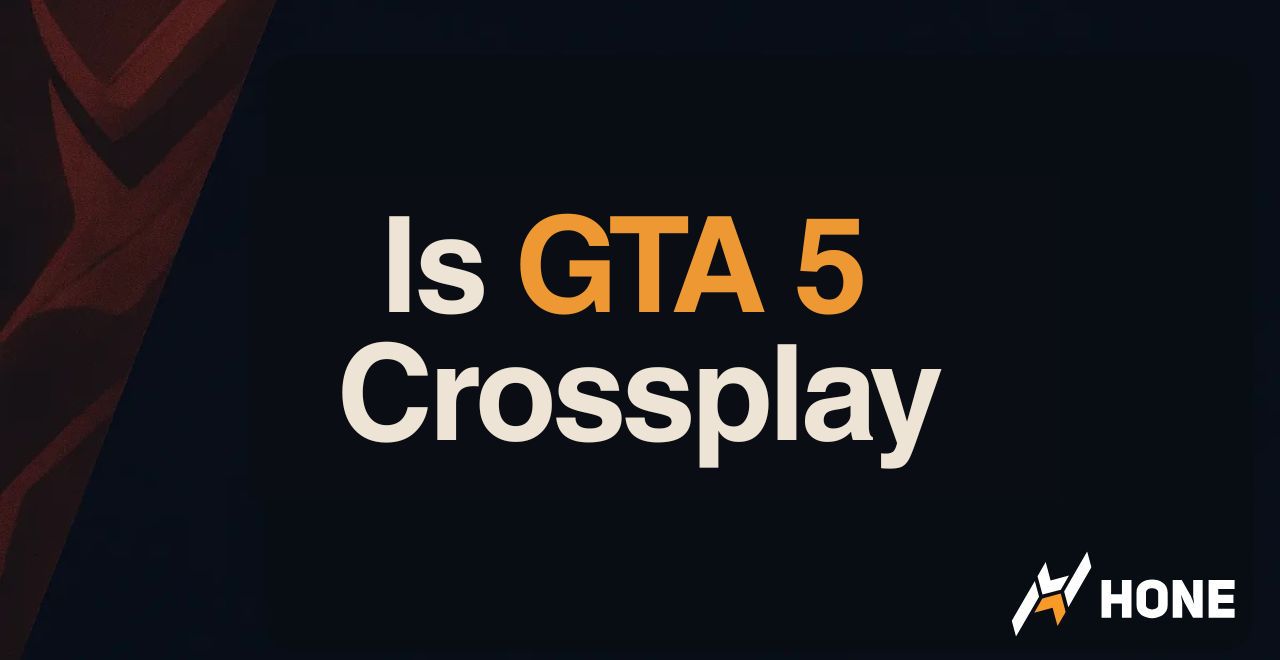

 Discord
Discord
 Instagram
Instagram
 Youtube
Youtube
 TikTok
TikTok